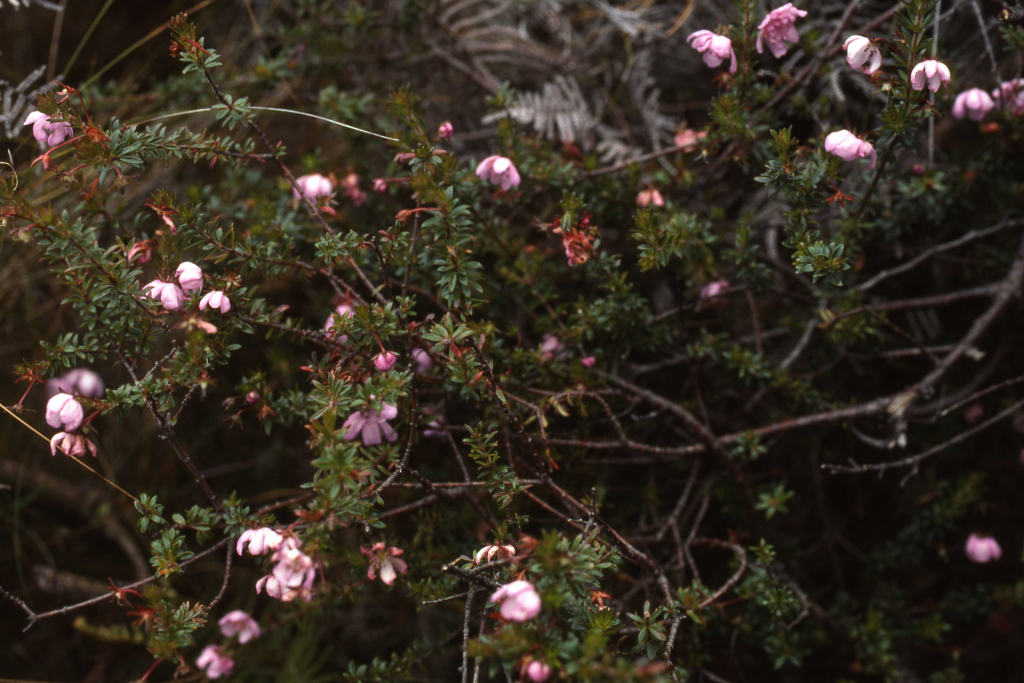Bauera rubioides
Andr. Wiry BaueraScrambling, wiry or tangled shrub to c. 2 m high; young stems pubescent, usually with short curled hairs and longer, spreading ones. Leaflets c. narrowly elliptic, 3–15 mm long, 1.5–5 mm wide, variably pilose to hirsute, at least when young; margin crenate or serrate, rarely entire. Flowers c. 5–20 mm wide, on fine, subglabrous to sparsely hirsute pedicels 1–3 cm long; sepals 5–8, narrowly lanceolate or elliptic, usually toothed 3–6 mm long; petals as many as sepals, obovate, pink or white; stamens c. 20–50, about as long as sepals, pale; ovary superior, styles spreading, slightly shorter than stamens. Capsule bilobed, c. 2–3 mm long, 4–5 mm wide; seeds ellipsoid, c. 1.5–2 mm long, colliculate, c. 8–12 per capsule. Flowers most of year (mainly Sep.–Jan.).
GleP, Brid, VVP, GipP, OtP, WaP, CVU, GGr, EGL, EGU, WPro, HSF, HNF, OtR, Strz, HFE, VAlp. Also SA, Qld, NSW, Tas. Scattered but locally common in damp heathland and heathy forests in the southern half of the State, mostly in lowlands, but ascending to c. 1000 m at e.g. Mt Kaye and near Mt Skene (between Licola and Jamieson). Rare in the Grampians (Mt William area). A 1997 collection from Mt Buffalo confirms its presence there.
Walsh, N.G. (1996). Cunoniaceae. In: Walsh, N.G.; Entwisle, T.J., Flora of Victoria Vol. 3, Dicotyledons Winteraceae to Myrtaceae, pp. 524–526. Inkata Press, Melbourne.
 Spinning
Spinning

